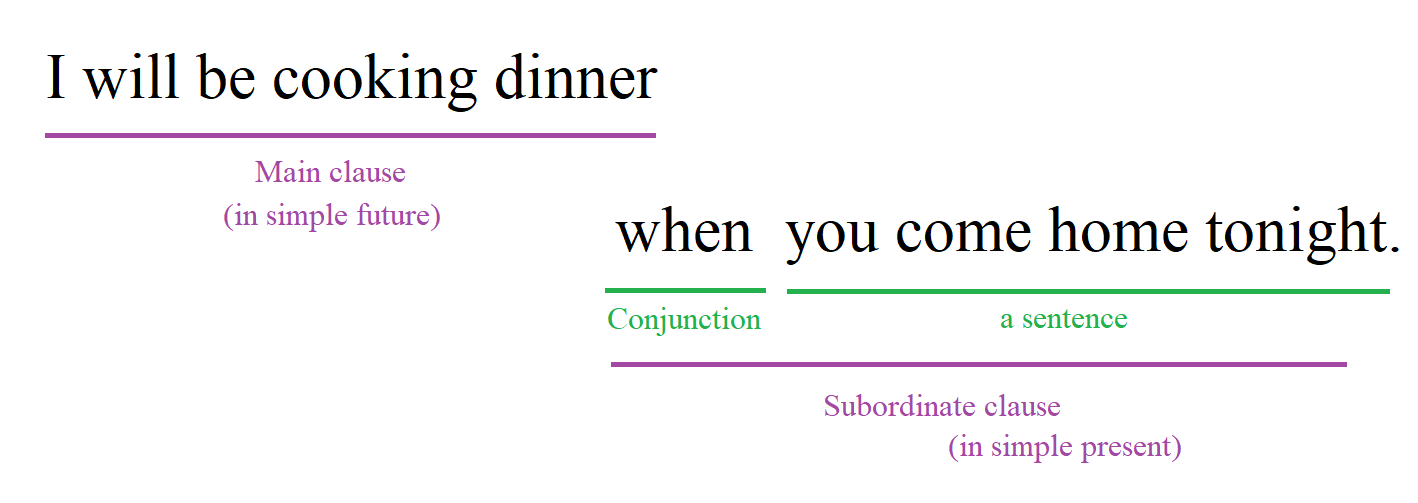Future Continuous Tense
- The future continuous tense is used to talk about actions that will be happening at a specific moment in the future.
- The structure for the future continuous tense is: Subject + will be + verb-ing (gerund) + (optional object).
The future continuous tense helps us talk about actions that will be happening at a specific moment in the future.
What is the Future Continuous Tense?
The future continuous tense describes actions that will be ongoing at a certain point in the future. It is often used to show that an action will be happening at a specific time or during a specific period in the future.
Grammar Rule: Subject + "will be" + verb-ing (gerund) + (optional object).
Example: I will be cooking dinner when you come home tonight.
This sentence means when you come home tonight (in the future), I will be in the middle of cooking dinner. Before you come home tonight, I will have started cooking dinner. After you arrive home tonight, I will still be cooking dinner. So, cooking dinner is a continuous action.

Also, you can use the future continuous tense to talk about your plan in the future. You can use it to talk about what you are planning to do at a specific moment or during a specific period in the future.
Examples:
-
I will be studying at 8 PM tonight.
Subject ("I") + "will be" + verb-ing ("studying") + object ("at 8 PM tonight").
-
She will be working on her project tomorrow afternoon.
Subject ("She") + "will be" + verb-ing ("working") + object ("on her project tomorrow afternoon").
-
We will be having dinner at 7 PM.
Subject ("We") + "will be" + verb-ing ("having") + object ("dinner at 7 PM").
Pratiquez ce sujet avec le AI English Tutor
AI English Tutor vous apprendra la grammaire et la pratiquera avec vous sous forme de conversation. De plus, plus de 100 questions pratiques sur ce sujet pour consolider votre compréhension.
Essayez ALULA gratuitement sur votre téléphone ou votre tablette








Avez-vous des questions sur cette leçon ? Posez-les dans la section des commentaires, ci-dessous.